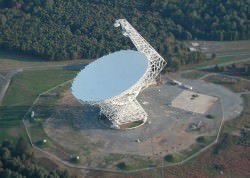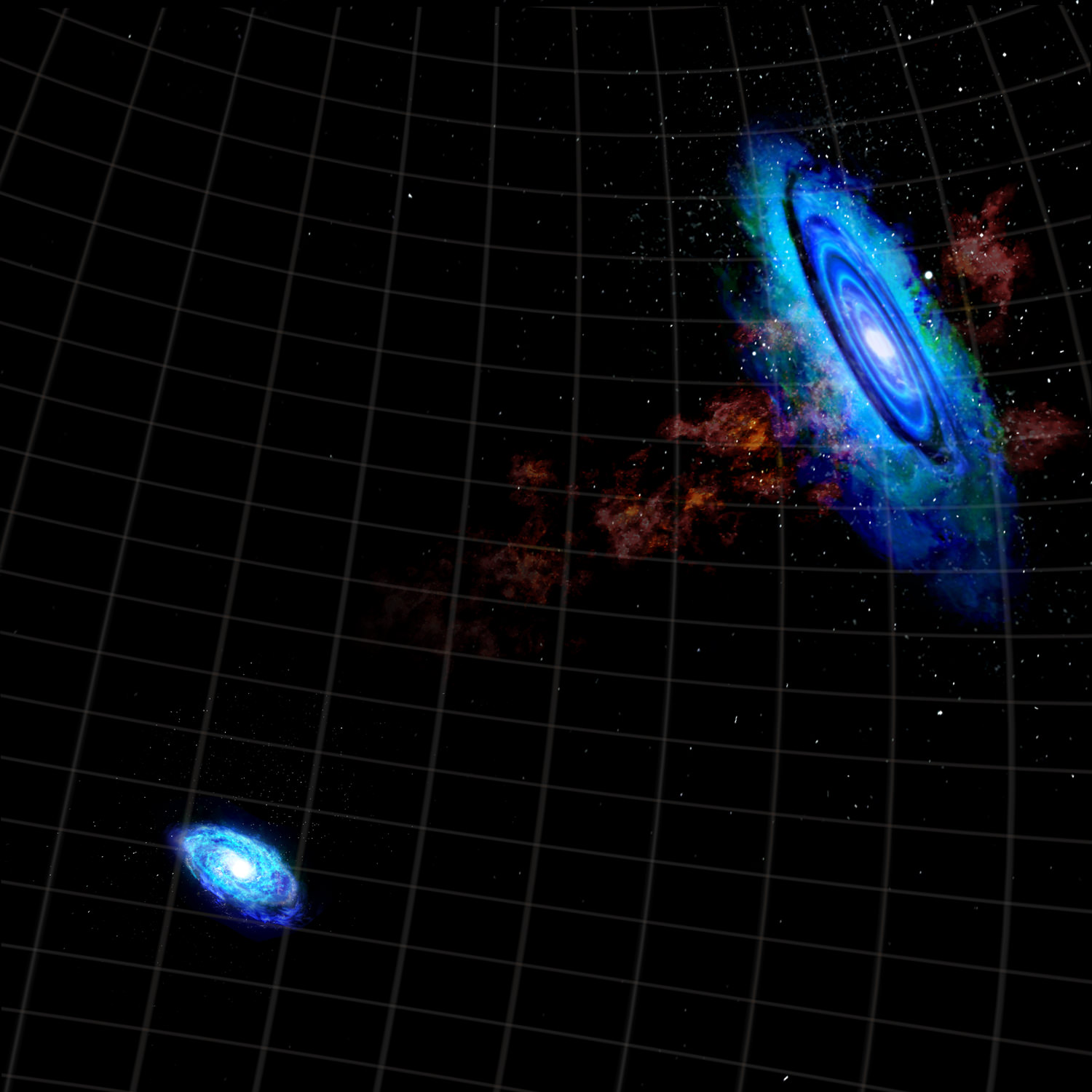[/caption]
An ancient passing between two nearby galaxies appears to have left the participants connected by a tenuous “bridge” of hydrogen gas, according to findings reported Monday, June 11 by astronomers with the National Radio Astronomy Observatory (NRAO).
Using the National Science Foundation’s Green Bank Telescope in West Virginia — the world’s largest fully-steerable radio telescope — astronomers have confirmed the existence of a vast bridge of hydrogen gas streaming between the Andromeda galaxy (M31) and the Triangulum galaxy (M33), indicating that they likely passed very closely billions of years ago.

The faint bridge structure had first been identified in 2004 with the 14-dish Westerbork Synthesis Radio Telescope in the Netherlands but there was some scientific dispute over the findings. Observations with the GBT confirmed the bridge’s existence as well as revealed the presence of six large clumps of material within the stream.
Since the clumps are moving at the same velocity as the two galaxies relative to us, it seems to indicate the bridge of hydrogen gas is connecting them together.
“We think it’s very likely that the hydrogen gas we see between M31 and M33 is the remnant of a tidal tail that originated during a close encounter, probably billions of years ago,” said Spencer Wolfe of West Virginia University. “The encounter had to be long ago, because neither galaxy shows evidence of disruption today.”
The findings were announced Monday at the 220th Meeting of the American Astronomical Society in Anchorage, Alaska. Read more on the NRAO website here.

